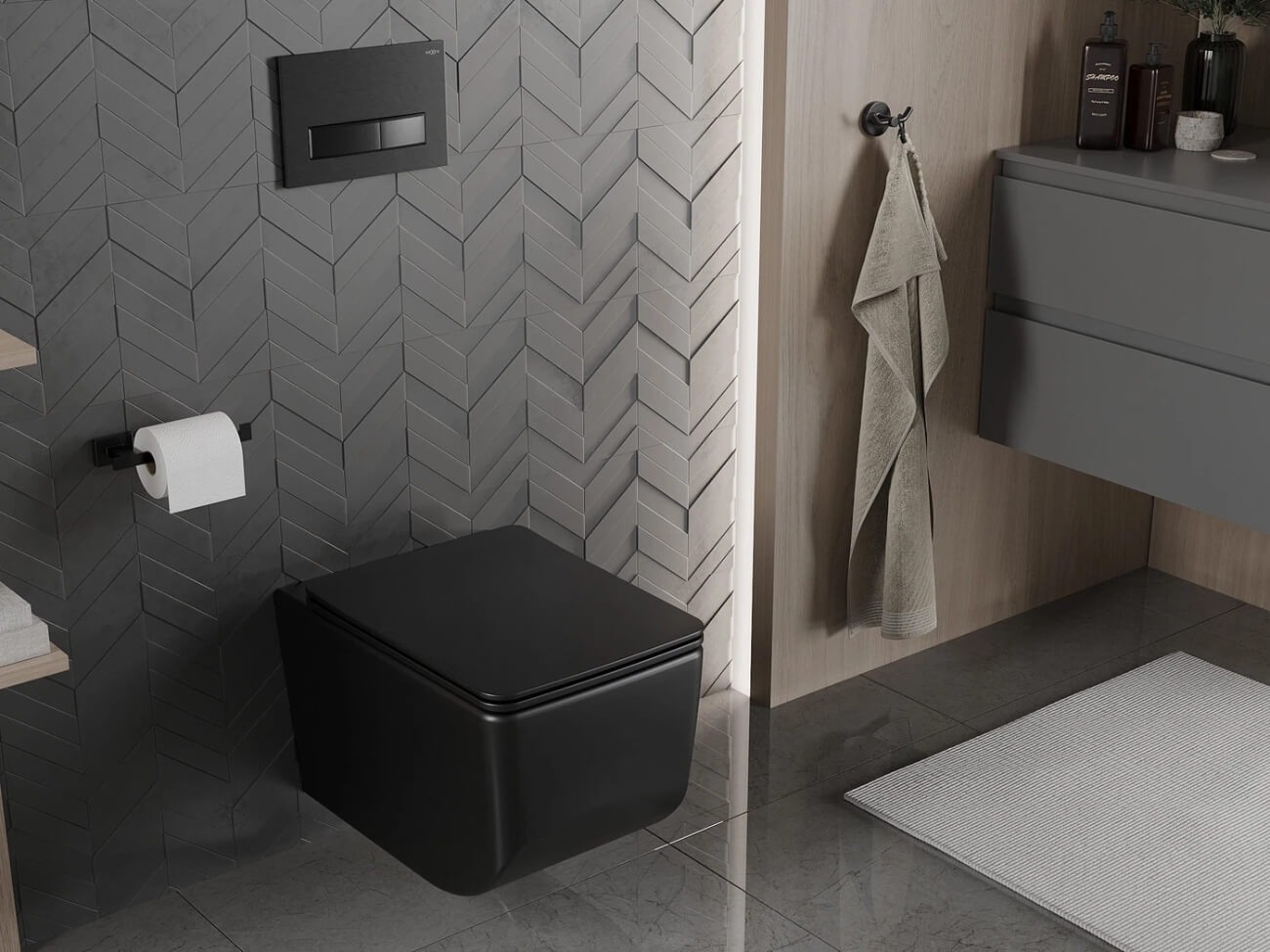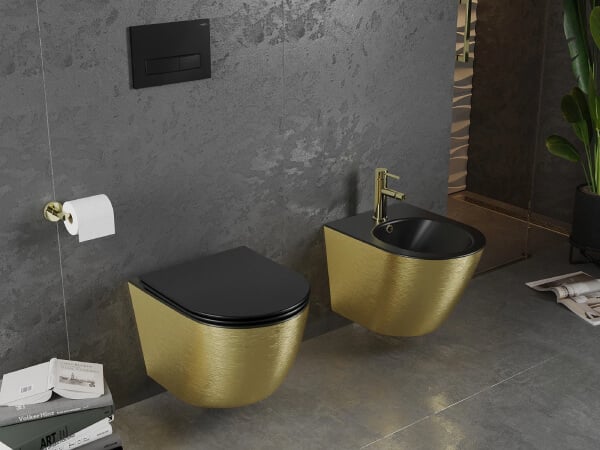
Connecting water to a WC frame is the most crucial step in installing a modern toilet. Doing this correctly ensures not only the trouble-free operation of the flush but also convenience and an aesthetic bathroom appearance. Do you want to know how to properly install a WC frame to enjoy its functionality for many years? Read our guide – learn step by step how to install contemporary bathroom ceramics.
What will you learn from this article?
Did you know that properly bringing water to a WC frame not only enhances its functionality but also improves the aesthetics of the bathroom? In this article, you will learn how to properly conduct a Geberit installation. You'll also discover:
- How to connect a Geberit to water?
- What to pay attention to when connecting water to a WC?
- How to properly install the flush and avoid leaks?
- What advantages does installing a frame at home offer?
Preparation for installing the frame – what should you know?
Connecting the water supply network to the toilet bowl requires proper preparation and consideration of several essential tasks. First and foremost, special attention must be paid to properly mounting the bowl in the wall and the water supply system to the sanitary ware. Contemporary ceramics, like those produced by Mexican company Mexen, allow for the aesthetic concealment of both the flushing mechanism and the entire water and sewage installation.
Types of frames
Contemporary toilets are available in two forms: concealed and exposed. Concealed frames, thanks to their construction, are hidden within the wall, allowing for an elegant and minimalist style. The entire installation, including the flushing mechanism, is discreetly hidden, leaving only the visible bowl and flush button. Exposed frames, on the other hand, are mounted externally, offering a practical solution when there are structural limitations or a desire for quicker installation.
Each of these systems caters to different aesthetic and functional needs, offering a wide choice for every type of interior.
Additional frame options – e.g., odour removal system
Connecting water to a WC frame is a crucial stage that determines the functionality of the entire system. A properly installed connection ensures the trouble-free operation of the flush and an aesthetic bathroom appearance. Thanks to modern solutions, such as wash toilets or odour removal devices, the level of user comfort can be significantly enhanced. Wash toilets offer extra hygienic functions, while odour removal systems effectively improve the air quality in the bathroom, resulting in a more pleasant experience of daily use.
Modern WC bowls and installation – what else should you know?
Before starting the installation, make sure you have access to water connections and appropriate tools, such as a plumbing wrench and a spirit level. Check the dimensions of the chosen construction carefully to fit the toilet's size and the manufacturer's technical specifications.
The installation of bathroom ceramics begins with placing the frame structure in the right spot. Typically, this is the interior of a solid wall that can support the weight of the toilet bowl and the entire installation. At this stage, you need to ensure it is stable since it will bear your weight daily.
Remember, all necessary connections, including the water connection to the WC, should be made just before installing the frame. It is also essential to install the flush button at the correct height. Determine the place on the wall before starting work.

Preparing water connections for the WC frame
Mounting the bowl in the wall begins with connecting it to the water supply network. In this case, standard cable ducts are an important installation element and must meet several requirements.
Primarily, due to the bathroom environment, they must be resistant to moisture and the effects of water and corrosion. It's worth choosing those made of durable materials such as PVC or HDPE. Additionally, they must be sufficiently strong to withstand mechanical loads, just like the frame.
Important installation rules:
- Matching the diameter – the pipes must have a diameter suitable for the cables to avoid installation difficulties and ensure proper water flow.
- Sealing connections – make sure that all connections are well-fitted, thus preventing possible water leaks.
Also, remember to thoroughly read the manufacturer's instructions so that the entire installation proceeds without issues and the water flows smoothly.
Connecting water to a WC frame – what needs to be done?
Wondering how to supply water to a WC? When plugging it into the WC frame, it's necessary to include the connection of the pipe bringing sewage to the flushing mechanism. Proper water connection to the Geberit is crucial for success. Therefore, it's essential to carefully cut and adjust all conduits to length to ensure they are tight. That is why during installation work, use high-quality gaskets and silicone, ensuring each installation element is properly secured.
The WC frame installation process – analyze the room size
Firstly, choosing the right mounting location is important. Ensure the location complies with the installation plan and that the required distances from the floor, other sanitary devices, and walls are maintained. It's also worth checking whether the room is well-ventilated, as this influences the comfort of use and the longevity of the installation.
A simple way to an elegant bathroom – installing a WC frame
Installing a WC frame varies depending on the type of location where it is to be mounted. In the case of brick or concrete walls, it can be firmly anchored without additional reinforcements. However, for plasterboard walls, which are less durable, it's necessary to use an additional reinforced frame to ensure adequate load-bearing capacity and stability, especially in areas subjected to heavy loads like mounting the WC bowl.
Additional tips to streamline the toilet installation process:
- Check connection tightness – make sure all pipe and connection joins are properly sealed. Properly installed connections prevent water leaks.
- Ensure proper placement of the bowl; remember, the flush is also important – adjust the height of the toilet bowl and the flush button to the comfort of the household members. Read the manufacturer's recommendations.
- Conduct a test – after completing the toilet installation, conduct a water flow test to ensure everything works correctly and the bowl doesn't leak.
- Ensure aesthetics – make sure all installation elements are discreetly concealed.
What benefits does proper water connection to the frame offer?
Properly installing a hanging toilet bowl guarantees not only comfort but also substantial aesthetics and bathroom functionality. Thanks to modern solutions used by contemporary bathroom fixtures manufacturers, numerous conveniences can be easily added to the bathroom, such as a wash toilet or an odour removal device.


















